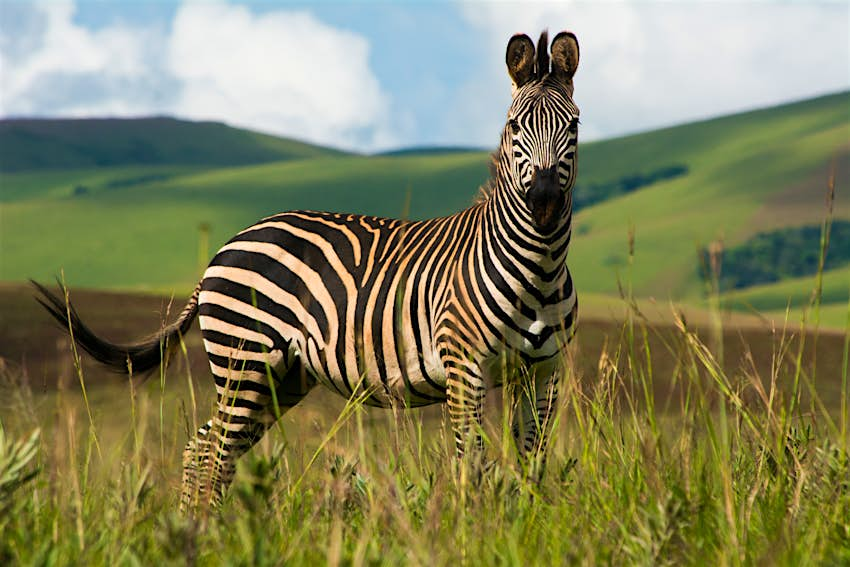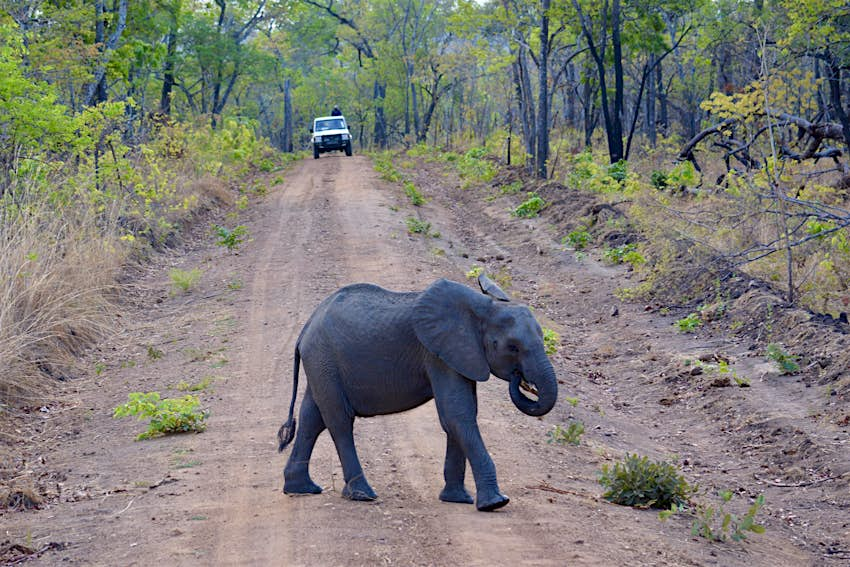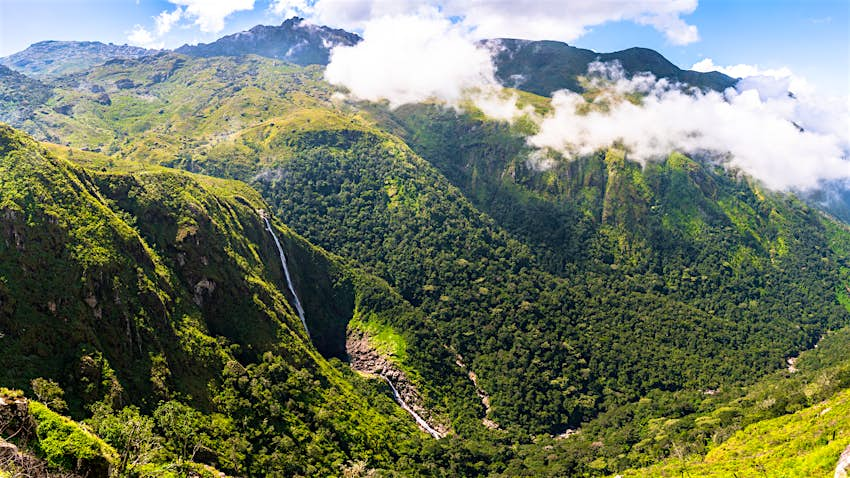A beach-and-bush holiday in Africa rarely falls into the discount-vacation category. But with flexible dates, patience for slow travel and a willingness to trade deluxe wilderness camps for rustic lodging, a trip to Malawi doesn’t have to drain your savings.
You can count on the bulk of your outlay going toward airfare, which doesn’t come cheap. The good news? Once you’ve arrived, Malawi – known as the “Warm Heart of Africa” – is one of the least expensive countries for travel in the southern part of the continent. On the ground, it’s easy to keep your budget in check while experiencing this underrated country’s spectacular scenery and attractions, whether your goal is to spot the Big Five, catalog migratory birds or relax on the shores of majestic Lake Malawi.
Here are 11 ways to keep your costs down on your trip to Malawi.
Choose a cheaper international airline
There are few alternatives to getting to Malawi other than by plane – but you do have a choice in airline. The cheapest international carriers that fly into Lilongwe, the capital, are Ethiopian Airlines or Kenya Airways. It’s also worth looking at flying into neighboring-country cities of Lusaka in Zambia and Maputo in Mozambique, then crossing the border into Malawi by road.

Visit during the “green” or shoulder season
Traveling during low and shoulder season can reap savings – with the caveat that most beach lodges and some properties in national parks close because of heat and heavy rains. Temper expectations by embracing green-season activities like birding and photography, especially in Nyika National Park. Low season runs November to March and shoulder season is from April to June.
Get more travel inspiration, tips and exclusive offers sent straight to your inbox with our weekly newsletter.
Rent a car, arrange point-to-point transfers or hop on the local bus
The best way to save on getting around this landlocked country is to avoid expensive flights, whether scheduled or chartered. If you’re feeling intrepid, you might consider renting a fully outfitted 4×4 Hilux with rooftop tent, camping gear, sundowner kits, satellite phone and a spare tire or two.Malawi is a small country with a mix of flat tarmac and dirt roads that are easy to navigate. Alternatively, if you’ve booked your trip with a tour operator, ask them to arrange transfers between destinations. For an even cheaper option, ride the local buses called matolas –just remember to light and prepare for every leg to take twice as long as in a private vehicle. What you’ll lose in time, you’ll make up for with friendships forged during the journey.
Visit Likoma Island by ferry
Likoma is one of Lake Malawi’s loveliest islands, and the way most visitors get there is by Ulendo Airlink out of Liwonde, a flight that can run over US$300 one way. However, patient travelers willing to ride the 1950s steamer ferry MV Ilala or structure their itinerary around the transit routes of newer MV Chambo are rewarded with the chance to stay in accommodations that look out onto sparkling Lake Malawi. On Likoma, you’ll meet all types at the bar of the Mango Drift hostel, where MK8025 (US $10) gets you a dorm bed, or MK802.50 (US$1) gets you a tent campsite.
Choose a tour operator with experience building budget itineraries
Many tour operators brag about their luxury packages and VIP access; finding one capable of a budget travel plan that’s better than you, the internet and a guidebook is the challenge. Crafted Africa offers a range of options in Malawi and has earned word-of-mouth cred for its affordable rustic adventures.
Convince a few friends to travel as a group
Solo travelers generally pay more all over the world, and Malawi is no exception. Splitting the cost of a car rental saves money, time and the hassle of riding buses or taking taxis alone.
Learn to love camping or backpacker lodges
Malawi has many beautiful wilderness lodges, but nightly rates run several hundreds of dollars per person. Most cities, parks and communities around the lakeshore, however, have well-run, comfortable backpacker lodges and hostels, often with camping space for the truly budget-conscious traveler. If you don’t have your own tent and gear, many places provide these for a few dollars.

Opt for a self-drive safari
Malawi is one of the best countries in southern Africa to explore independently by car, in part because several national parks make it easy to save on a self-drive safari. While nothing can replace an experienced guide in a Jeep navigating and identifying wildlife, finances might put this out of reach. Reading up and staying alert behind the wheel provides another option.
Majete National Park, Malawi’s best for spotting the Big Five, charges self-drivers a MK16,050 (US$20) entry fee and offers a community campsite. For MK8025 (US$10) per visitor plus a car fee of MK2407–12,037 (US$3–$15, depending on weight), you can drive through Nkhotakota Wildlife Reserve, home to a large elephant population. The visitor campsite is on picturesque Chipata Mountain.
Eat local to save and discover new flavors
With the arguable exception of the rat kebabs sold along the roadside, most food in Malawi is simple, filling and tasty. If you’re near the lake, try the fresh fish hauled in off the morning boats. Depending on whether you’re in a restaurant or a beach shack, expect to pay MK321 to MK6420 (US$4 to US$8) for a chambo, the local fish, with chips. (Ethically oriented eaters should keep in mind that Lake Malawi’s fish population, long an important source of protein for surrounding communities, has been dwindling from overfishing and climate change.) Another budget option is to patronize Indian restaurants, as Malawi has a robust population of immigrants turning out flavorful, affordable meals.
Hit outdoor attractions without lines and high fees
Malawi’s attractions are by and large inexpensive or free. For example, the late Stone Age and Iron Age paintings at Unesco-listed Chongoni Rock Art Area remain an open-air, under-attended art gallery available to anyone willing to make the effort to visit. Tour the intriguing artworks on your own, or hire a local guide at nearby Dedza Pottery Shop for MK8025 (US$10) per person if driving your own vehicle.

Go for a hike or climb a mountain
Malawi has numerous opportunities for stretching your legs without spending money, whether on a hike through the verdant tea fields of Thyolo or up and around the Zomba Plateau’s many trails. If you’re interested in summiting the highest peak south of Tanzania, consider Malawi’s answer to Kilimanjaro, Mt Mulanje. On Mulanje, you can hire a guide and book mountain hut accommodations for roughly MK20,062 (US$25) per day – much less than the cost of Kilimanjaro’s entrance fee alone (US$70 per day). If you want cooks and porters, expect around MK80,25 to MK120,375 (US$100 to US$150) per day, depending on group size. The impressive hike up Sapitwa Peak, which sits at roughly 2990m (9800ft), takes three days and two nights and doesn’t require special skills. Plus, you’ll likely have the summit to yourself.
Daily costs in Malawi
Hostel room: US$10–20 (dorm bed)
Basic room for two: US$30–50
Self-catering apartment (including Airbnb): from US$80
Public transport (Lilongwe to Liwonde on local bus): US$15
Coffee: US$1–4
Sandwich: US$3–5
Dinner for two: US$30–40
Beer/pint at the bar: US$1.50–3





















Discussion about this post